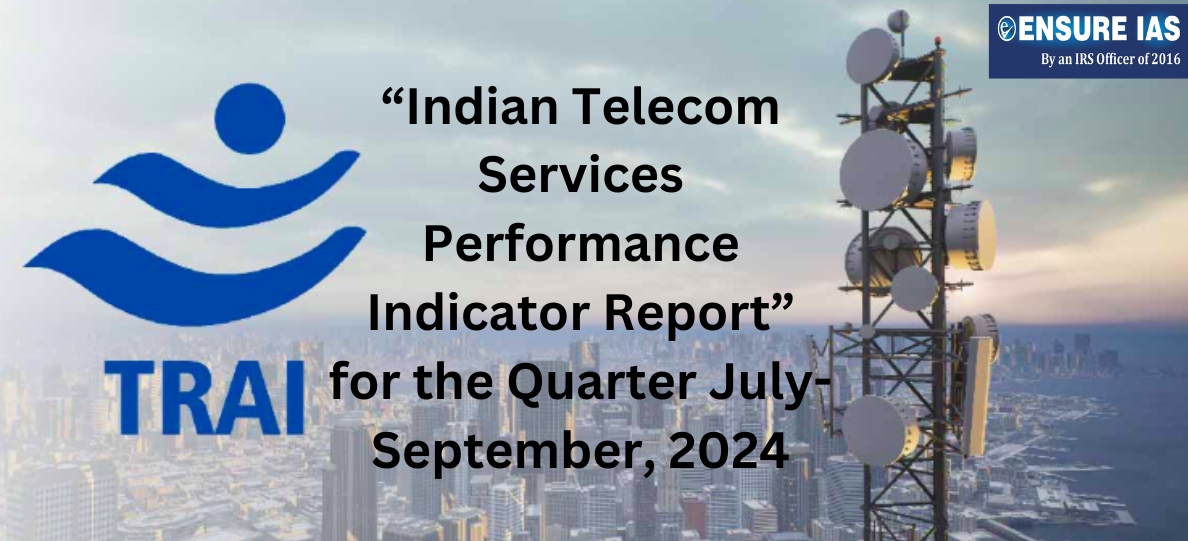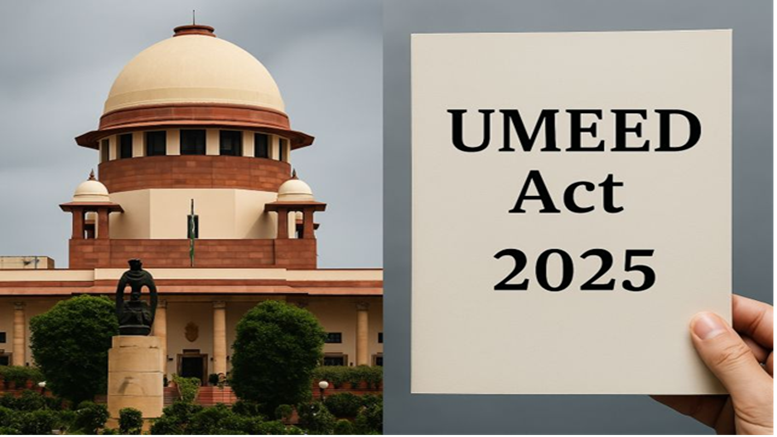- Courses
- GS Full Course 1 Year
- GS Full Course 2 Year
- GS Full Course 3 Year
- GS Full Course Till Selection
- Online Program
- GS Recorded Course
- NCERT (Recorded 500+ Hours)
- Polity Recorded Course
- Geography Recorded Course
- Economy Recorded Course
- AMAC Recorded Course
- Modern India, Post Independence & World History
- Environment Recoded Course
- Governance Recoded Course
- Science & Tech. Recoded Course
- International Relations and Internal Security Recorded Course
- Disaster Management Module Course
- Ethics Recoded Course
- Essay Recoded Course
- Current Affairs Recoded Course
- CSAT
- 5 LAYERED ARJUNA Mentorship
- Public Administration Optional
- ABOUT US
- OUR TOPPERS
- TEST SERIES
- FREE STUDY MATERIAL
- VIDEOS
- CONTACT US
Indian Telecom Services Performance Indicator Report
Indian Telecom Services Performance Indicator Report
03-01-2025

- In January 2025, TRAI released the “Indian Telecom Services Performance Indicator Report” for the Quarter ending 30th September, 2024.
- This Report provides a broad perspective of the Telecom Services in India and presents the key parameters and growth trends of the Telecom Services as well as Cable TV, DTH & Radio Broadcasting services in India for the period covering 1st July, 2024 to 30th September, 2024 compiled mainly on the basis of information furnished by the Service Providers.
Indian Telecom Services Performance Indicators for the July-September 2024 quarter:
1. Internet Subscribers:
- Total Internet Subscribers: There was a slight increase in total internet subscribers, from 969.60 million in June 2024 to 971.50 million by September 2024, reflecting a growth of 0.20%.
- Wired Internet Subscribers: 43.64 million.
- Wireless Internet Subscribers: The vast majority of subscribers, 927.86 million, used wireless internet.
-
Broadband vs Narrowband:
- The Broadband Internet subscriber base saw a modest increase, reaching 944.39 million by September (up by 0.39%).
- Narrowband (slower internet speeds) saw a slight decline, dropping to 27.11 million.
- Wireline Growth: Wireline (landline) subscriptions grew by 5.20%, rising from 35.11 million to 36.93 million. On a Year-On-Year (Y-O-Y) basis, wireline subscriptions grew by 19.22%.
- Wireline Tele-density: Tele-density measures the number of telephone connections per 100 people. This increased from 2.50% to 2.63%, showing a growth of 4.96%.
2. ARPU (Average Revenue Per User):
- Wireless ARPU: The average revenue per wireless subscriber increased significantly by 9.60%, rising from Rs. 157.45 to Rs. 172.57.
- Prepaid ARPU: Rs.171 per month.
- Postpaid ARPU: Rs.190.67 per month.
- Y-O-Y, wireless ARPU increased by 15.31%.
-
Monthly Average Outgoing (MOU):
- There was no change in the overall MOU, which remained at 974.
- Prepaid users spent an average of 1012 minutes per month, while postpaid users averaged 534 minutes.
3. Telecom Sector Revenues:
- Gross Revenue (GR): Telecom sector's GR rose by 6.27% to Rs. 91,426 crore in the quarter.
- Adjusted Gross Revenue (AGR), which reflects the sector's taxable revenue, increased by 6.74%, reaching Rs. 75,310 crore.
- License Fee paid to the government grew by 6.69%, reaching Rs. 6,023 crore.
-
Year-on-Year (Y-O-Y) Growth:
- GR saw a Y-O-Y growth of 10.50%, while AGR had a notable increase of 13.11%.
- Pass-Through Charges: These charges (such as taxes and regulatory fees) increased by 2.91% to Rs. 12,926 crore.
4. Telephone Subscribers and Tele-density:
- Decline in Telephone Subscribers: The total number of telephone subscribers dropped from 1,205.64 million in June 2024 to 1,190.66 million by September 2024 (a 1.24% decline).
- Urban Areas: Saw a small drop from 667.13 million to 662.15 million subscribers.
- Rural Areas: Also decreased from 538.51 million to 528.51 million subscribers.
-
Tele-density:
- Overall: Tele-density declined from 85.95% to 84.69%.
- Urban Tele-density: Fell from 133.46% to 131.86%, reflecting a small reduction in urban subscriptions.
- Rural Tele-density: Also decreased from 59.65% to 58.48%.
5. Wireless Subscribers:
- The wireless subscriber base decreased by 1.44%, from 1,170.53 million to 1,153.72 million. This decline was attributed to a net loss of 16.80 million subscribers during the quarter.
- Wireless Tele-density: Dropped from 83.45% to 82.07%.
6. Quality of Service (QoS) Compliance:
- Wireline Service Providers: Achieved full compliance on key metrics such as:
- Fault repair time.
- Billing credibility (both prepaid and postpaid).
- Complaint resolution within 4 and 6 weeks.
-
Cellular Mobile Providers:
- Full compliance with metrics like call setup success, packet drop rates, and timely complaint resolution.
- Improvements were seen in network congestion and complaint credit processing times.
- Deterioration was noted in the accessibility of customer care and call answer times.
7. Broadcasting and Radio:
-
Satellite TV:
- A total of 912 private satellite TV channels were authorized, and out of the 362 pay TV channels, 258 were SD (Standard Definition) and 104 were HD (High Definition).
- Pay DTH Subscribers: The pay DTH (Direct-to-Home) service experienced a decline in active subscribers, from 62.17 million in June 2024 to 59.91 million in September 2024.
-
FM Radio:
- There were 388 private FM radio channels operational across 113 cities, with the advertising revenue for these stations decreasing slightly from Rs. 428.45 crore to Rs. 423.52 crore.
- Community Radio: There were 513 operational community radio stations as of September 2024.
What is Telecom Regulatory Authority of India (TRAI)?
Composition:
Functions:
Binding Nature:
Appellate Authority:
|
|
Also Read |
|

![img-PSYCHOLOGICAL WARFARE [PSYWAR]](https://i.filecdn.in/755esias/PSYCHOLOGICALWARFAREPSYWAR-1747206772505.jpg)

